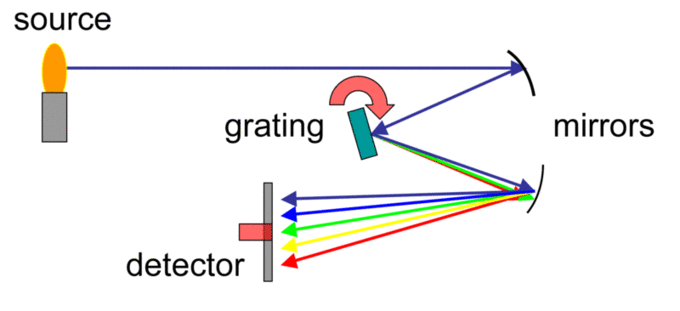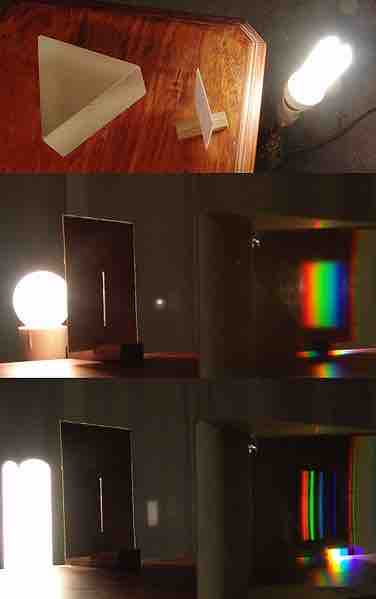The Spectrometer
A spectrometer is an instrument used to intensely measure light over a specific portion of the electromagnetic spectrum, to identify materials. The instrument produces lines, much like those produced from diffraction grating as covered in a previous atom, and then measures the wavelengths and intensities of those lines.
shows a diagram of how a spectrometer works. The source is placed in front of a mirror, which reflects the light emitted from that object onto a diffraction grating. This grating then disperses the emitted light to anther mirror which spreads the different resultant wavelengths and reflects them onto a detector which records the findings. This type of instrument is used in spectroscopy.

Spectrometer Diagram
This diagram shows the light pathways in a spectrometer.
Spectroscopy
Spectroscopy studies the interaction between matter and radiated energy. This radiated energy is a function of wavelength and frequency. Every type of atom has its own frequency. When the spectrometer produces a reading, the observer can then use spectroscopy to identify the atoms and therefore molecules that make up that object.
Spectroscopes
Spectroscopes are used in a variety of fields, such as astronomy and chemistry. They use a diffraction grating, movable slit, and a photodetector. All of these elements are controlled by a computer, which records the findings. A material is heated to incandescence and it emits a light that is characteristic of its atomic makeup. Each atom has its own spectroscopic 'fingerprint'. In you can see a very simple spectroscope based on a prism. As another example, Sodium produces a double yellow band.

A simple spectroscope
A very simple spectroscope based on a prism